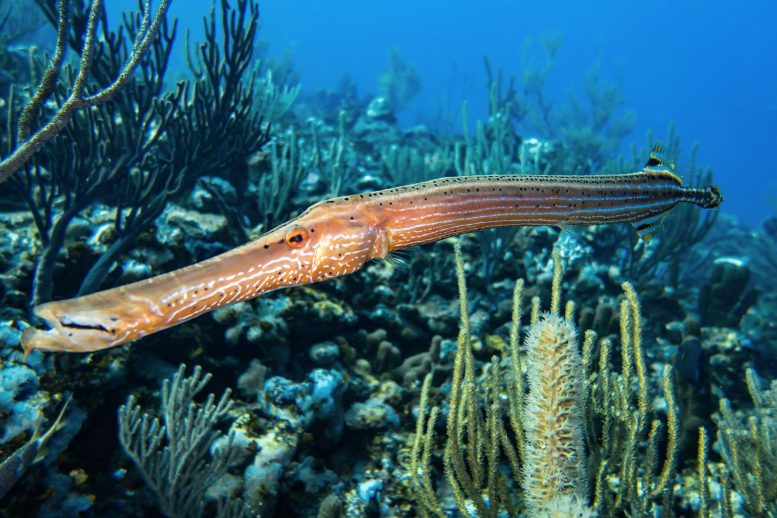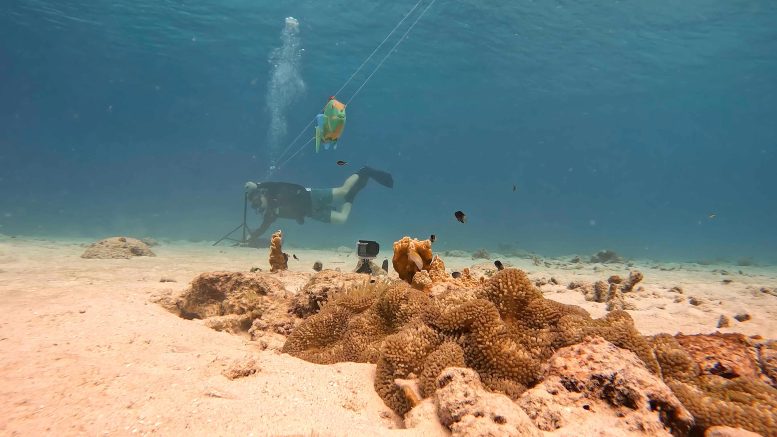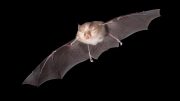
Research reveals that trumpetfish stealthily hunt by camouflaging themselves behind other fish like parrotfish, deceiving their prey, damselfish, in a novel survival strategy that may become more widespread due to coral reef degradation.
An experiment on coral reefs provides the first evidence that predators use other animals for motion camouflage to approach their prey without detection.
A new study provides the first experimental evidence that the trumpetfish, Aulostomus maculatus, can conceal itself by swimming closely behind another fish while hunting – and reduce the likelihood of being detected by its prey.
In this ‘shadowing’ behavior, the long, thin trumpetfish uses a non-threatening species of fish, such as parrotfish, as camouflage to get closer to its dinner.
This is the only known example of one non-human animal using another as a form of concealment.
The research involved hours of diving in the Caribbean Sea, pulling hand-painted model fish along a wire.
The long thin trumpetfish uses a bigger, non-threatening species of fish, such as parrotfish, as camouflage to get closer to its dinner without being detected. Credit: Sam Matchette
“When a trumpetfish swims closely alongside another species of fish, it’s either hidden from its’ prey entirely, or seen but not recognized as a predator because the shape is different,” said Dr. Sam Matchette, a researcher in the University of Cambridge’s Department of Zoology and first author of the study.
Damselfish, Stegastes partitus, form colonies on the seafloor and are a common meal for trumpetfish. Working amongst the coral reefs off the Dutch Caribbean island of Curaçao, researchers set up an underwater system to pull 3D-printed models of trumpetfish on nylon lines past colonies of damselfish, and filmed their responses.
Damselfish inspected the model trumpetfish — and rapidly fled from this predator to avoid being eaten. Credit: Sam Matchette
When the trumpetfish model moved past alone, damselfish swam up to inspect – and rapidly fled back to shelter in response to the predatory threat.
When a model of a herbivorous parrotfish, Sparisoma viride, moved past alone, the damselfish inspected and responded far less.
When a trumpetfish model was attached to the side of a parrotfish model – to replicate the shadowing behavior of the real trumpetfish – the damselfish responded just as they had to the parrotfish model alone: they had not detected the threat.
Matchette said: “I was surprised that the damselfish had such a profoundly different response to the different fish; it was great to watch this happening in real time.”
The study, involving collaborators at the University of Bristol, is published in the journal Current Biology.
“Doing manipulative experiments in the wild like this allows us to test the ecological relevance of these behaviors,” said Professor Andy Radford in the University of Bristol’s School of Biological Sciences, and coauthor of the study.
Matchette, along with his co-author and dive buddy Christian Drerup, spent hours underwater, barely moving, to conduct their experiment.
Their earlier questioning of divers working at dive shops in the Caribbean revealed that trumpetfish are commonly seen swimming alongside parrotfish and other reef fish – but the reason for this remarkable behavior had not been tested.
In addition, divers were much more likely to have seen the shadowing behavior on degraded, less structurally complex reefs.

The researchers spent hours underwater pulling model fish along a wire past colonies of damselfish, and filming their responses. Credit: Sam Matchette
Coral reefs around the world are being degraded due to the warming climate, pollution, and overfishing. The researchers say the strategy of hiding behind other moving fish may help animals adapt to the impacts of environmental change.
“The shadowing behavior of the trumpetfish appears a useful strategy to improve its hunting success. We might see this behavior becoming more common in the future as fewer structures on the reef are available for them to hide behind,” said Dr. James Herbert-Read in the University of Cambridge’s Department of Zoology, senior author of the study.
Human duck hunters historically hid behind cardboard cut-outs of domestic animals – called ‘stalking horses’ – to approach ducks without being detected. But this strategy has received little attention in non-human animals and has never been experimentally tested before.
Reference: “Predatory trumpetfish conceal themselves from their prey by swimming alongside other fish” by Samuel R. Matchette, Christian Drerup, Isla Keesje Davison, Stephen D. Simpson, Andrew N. Radford and James E. Herbert-Read, 7 August 2024, Current Biology.
DOI: 10.1016/j.cub.2023.05.075










Be the first to comment on "Motion Camouflage: The Remarkable Hunting Tactics of Trumpetfish"